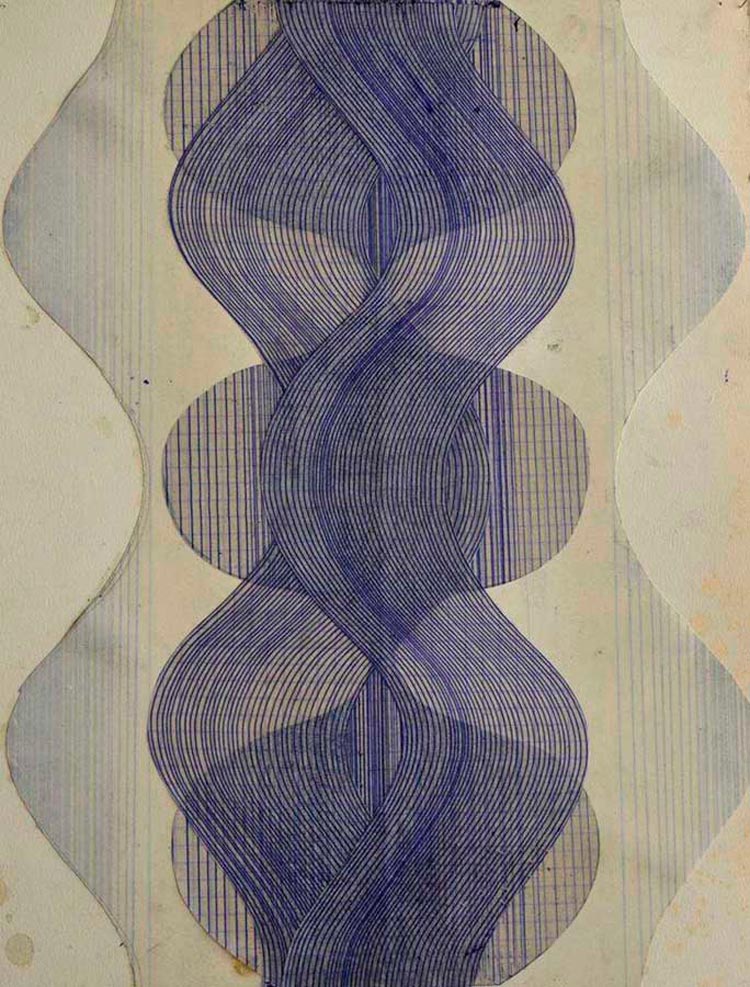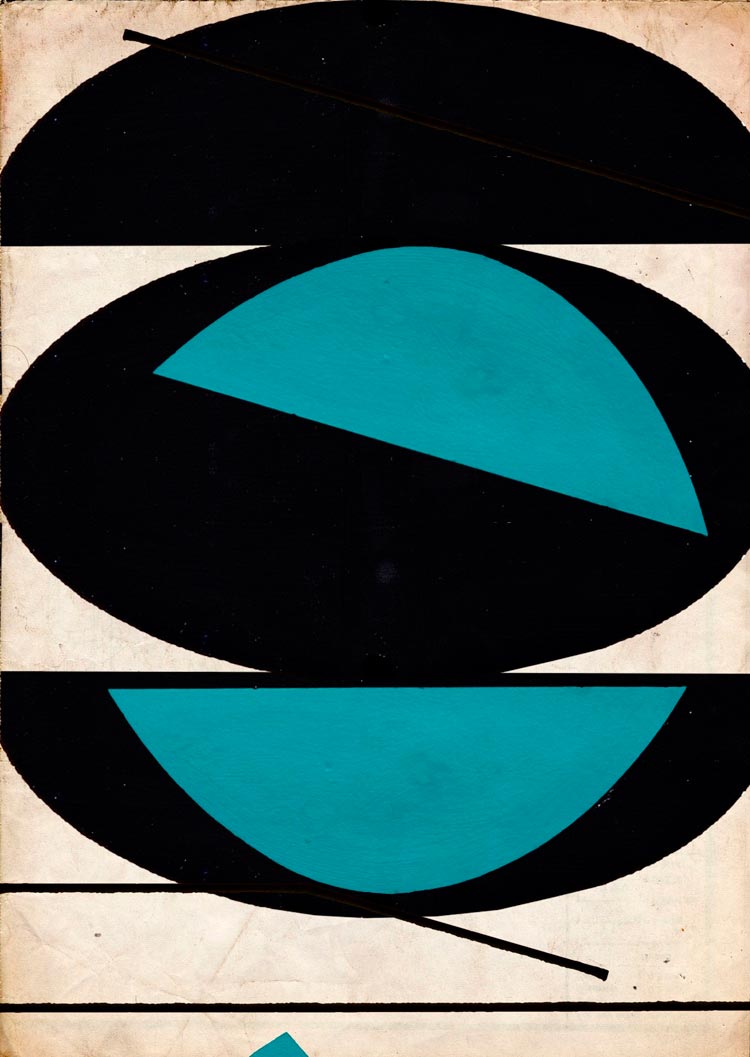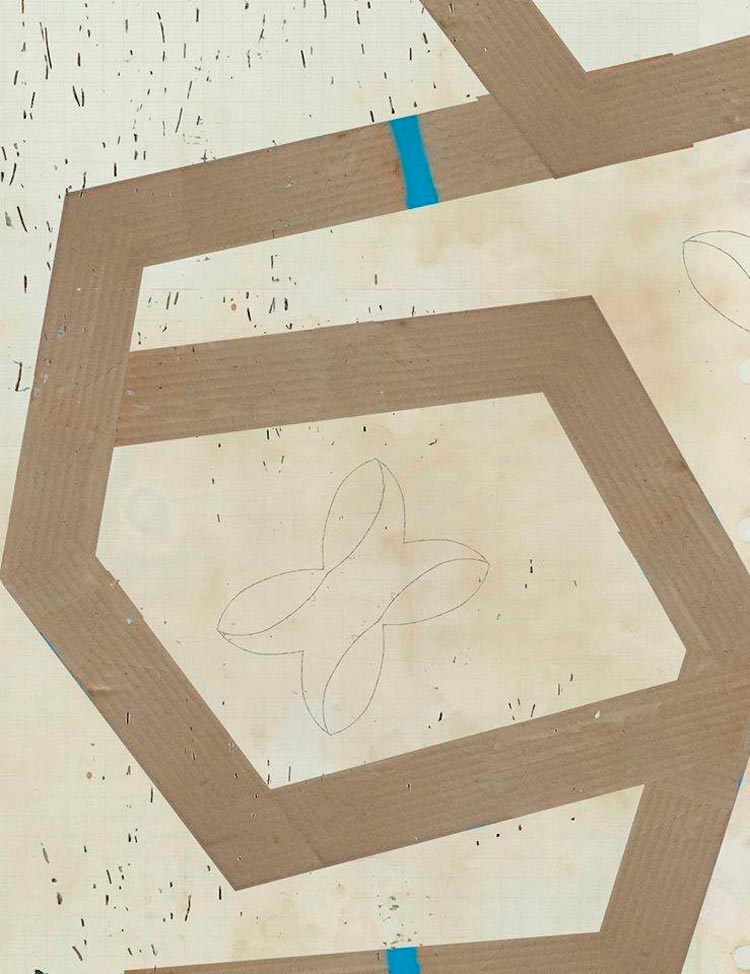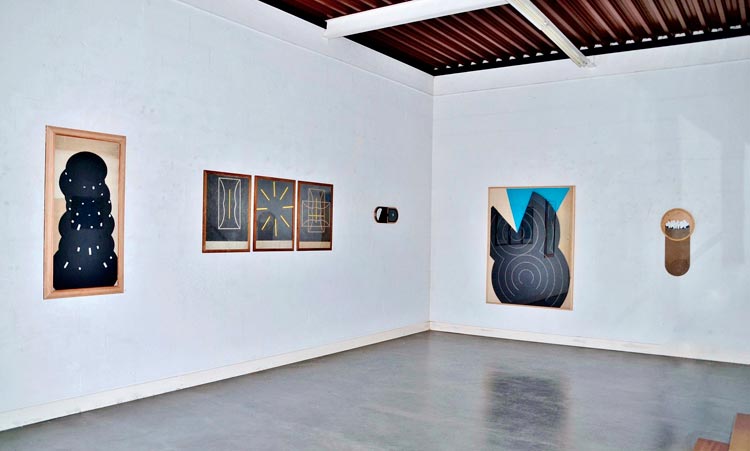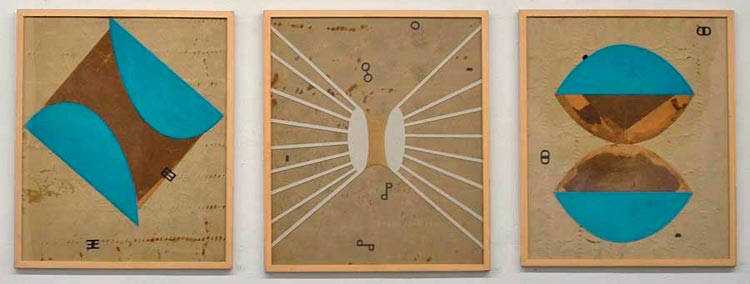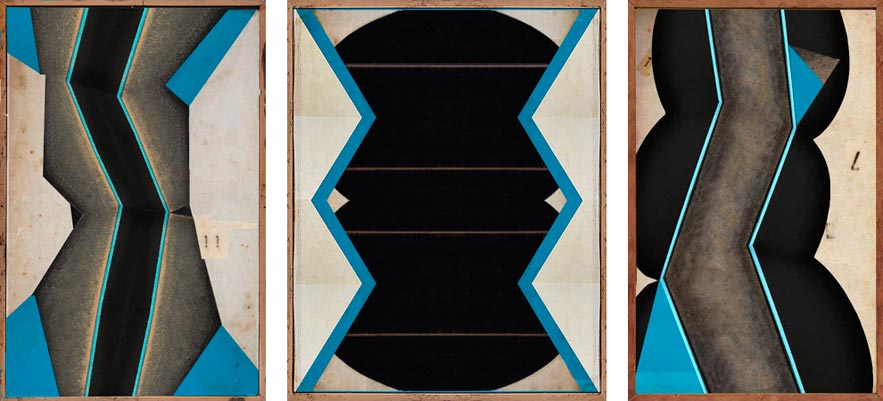For me, the most alluring aspect of studying art is discovering new, unknown before pieces and their creators. I don’t mean here the younger generation (the so-called Young Art) but mature artists. One of such discoveries of mine is Christian Verhelst – a splendid Belgian artist, whom you won’t find in history of art books. Self-taught? No. In the 80s he studied at the Royal Academy of Arts in Ghent. Then he moved to a Flemish province where he lives and creates away from big cities, art market, big galleries, art critics, curators and vernissages.
His art can be described as spiritual, mystical but not religious. He is a contemplative artist. As he says about himself, he starts his work from thought process, trying to achieve a balance between mind, imagination and feeling during the creative process. He is inspired by philosophical texts, mythology and quantum physics. As for the influences of other artists, he surely holds Mark Rothko, Clyfford Still and Piet Mondrian in high regard – exactly due to their creative stances and spirituality. As for the technical aspects, he is fascinated with drawings of Auguste Rodin and Alberto Giacometti.
Christian Verhelst does painting, sculpture but most willingly expresses himself in drawing. He is the author of hundreds of abstract drawings executed in mixed media on paper. He uses pencil, charcoal, pen. He limited the color palette to black, white, grey and light blue, strong ultramarine or turquoise accents. He started to reduce recognizable depictions down to suggestive signs and symbols. The impact of Verhelst’s drawings lies in both strong, condensed graphic form as well as in their amazing symbolic load.
There is a visible tension between lines in his drawings. Lines create rythms and shape into waves. Waves emit energy. In some pieces the lines twirl or tie in loops, which then move apart. The expressive lines and strong forms contrast with delicate lines and subtle tonal transitions. Some forms spread from darkness into the light, other duplicate themselves, creating new ones. The artist often uses illusions of space, as if he wanted to instill time and infinity. Infinity of line is very important in Verhelst’s drawings, their rotary and sinuous movement which doesn’t have a beginning or an end. For me, drawing is catharsis – says Verhelst.
From the unconsciousness emerge forms, enigmatic signs connected with what the artist calls a primary situation, from which everything else grows. Verhelst treats drawing as a visual journal, used for expressing feelings and thoughts. It is his everyday ritual, which allows him to build his own visual language. He draws in the twilight of his studio, which has only two small windows. The time passes by elsewhere. For Verhelst, a piece of art should always invoke a sort of immaterial alienation.
A decisive majority of Verhelst’s art is purely abstract but in some drawings, especially the earlier ones, there is a shape of human silhouette. Most often it is a human figure obscured by x-rays. Using the x-ray negative depicting human shape shows the encounter with how fleeting human existence is. Life and death are very close to each other – they connect in reality and on painting.
Some series of Verhelst’s are inspired by the theory of Rupert Sheldrake’s morphogenetic fields (gr. morphe- form, shape). Sheldrake maintains that all systems self-organize through remembering the previous systems of a given type (cells, cultures) transmitted intergenerationally. The repeatedness of forms is not an outcome of general biological or chemical laws but is dependent on the previous states. According to Ruper Sheldrake’s theory, each thing has its own morphogenetic field from which it derives its form, structure and order. Such field is a kind of memory, a pattern of shaping principle. Verhelst does not take Sheldrake’s views for granted but they are a source of inspiration in his artistic career.
Verhelst holds that his drawings are carriers of memory, for him they enclose a sort of consciousness. The artist says: I never buy paper in a shop. New paper has no magic in it. I find my paper at flea markets, I rip unprinted pages from old books, I use old cards. Such sheets of paper are often discolored, yellowish with rusty stains. They were touched by many readers and sometimes notes were made on them. Such paper has memory, in a way it already is a morphogenetic field. [1]
Verhelst’s art has a continuous but cyclic character. Some motifs and symbols disappear only to emerge later. In his pieces we find cosmic themes, mysticism of nature, traits of scientific theories or technical motifs. All these pieces are mysterious, intriguing and have a poetical atmosphere of infinity.
Pieces of Christian Verhelst were presented at exhibitions of contemporary art in Retroavangarda Gallery
text by Anna Kłos
translation by Karolina Kłos
[1] Based on the introduction to the catalog by Bert Popelier, published by Galerie William Wauters, Oosteeklo, 2001


